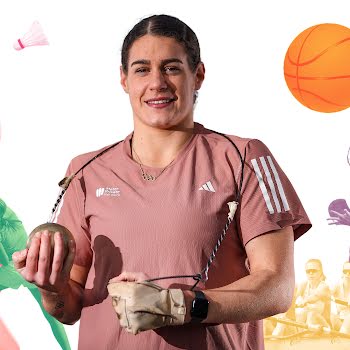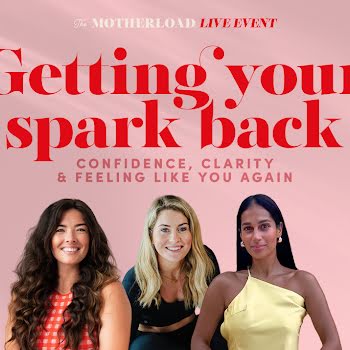By Freya Drohan
12th Aug 2020
12th Aug 2020
In an age where everyone with a social media platform or a podcast is shelling out health advice, it’s more important than ever to seek information from a trusted source. Personal trainer Adrienne Murphy talks to Freya Drohan about how yoga and resistance training can work hand-in-hand
When it comes to fitness preferences, many people can be in one of two camps: firmly fixed with their day-to-day gym routine or a devout yogi. Perhaps this is because there never seem to be enough hours in the day to dabble in every form of wellness your heart desires, or maybe it’s down to feeling more comfortable on yoga mat versus the gym floor. But, according to personal trainer Adrienne Murphy, yoga and weight training can and do go hand-in-hand.
According to Murphy, who works as both a personal trainer and corporate manager at No 17 Personal Training and is the co-owner of My Retreat, yoga is the key ingredient to recovering after a heavy day of strength training.
“While I’m not a yoga instructor, I do incorporate it into my weekly fitness and wellness regime and as a personal trainer, I see the great need for clients to include it in order to improve overall flexibility,” she told IMAGE.

@Adrienne_Murphy1 models a yoga mat she c0-created with Maser as part of Flowstate
“Both types of training are of benefit, physically and mentally. Yoga has been a stable part of all good training and wellbeing programmes for centuries. Although it was once viewed as a spiritual practice that was mostly used by monks and spiritual folk, it is now widely accepted by the strength training populations as an essential cog to building a ‘chiseled’ physique and creating longer, more defined muscle tone,” Murphy added.
Weight training
“When yoga is strategically placed into a structured training programme, it can help facilitate the recovery on a muscular level but also on a neural level. The whole principle of weight training is that we stress our muscle tissue as well as our CNS (Central Nervous System) and our endocrine system with weight to cause a disruption in homeostasis.”
“In doing this we essentially get our body to adapt from its current state and either grow, get leaner or get fitter.”
While the focus can often appear to be on work-outs that are ‘harder, better, faster, stronger’ – this should really not be the case.
“The key to a great training programme is not just how hard you train, but more how hard you recover from training,” Murphy said. “Yoga is a fantastic recovery tool as it both helps tight muscle tissue unwind and regain length. Therefore it can prevent potential injuries, as well as helping to calm down CNS stress through focused breathing, and in some cases meditation. This in turn shortens recovery time, as well as improving how muscles contract and improving the ROM [range of motion] for complicated lifts.”
For those bound to desks from 9-5, yoga is also an incredible outlet to keep the body mobile.
Different goals
“New research is showing that we need one minute of mobility work per hour that we are in a seated position. How many of us dedicate enough time to the 70+ hours per week we are spending seated in the car, the office or unwinding by again sitting on the couch that evening,” Murphy asks.
“Individuals can spend too much time focusing on what work-out they are going to in order to burn more calories, looking for new HIIT or spin classes in order to sweat, rather than listening to what their body actually requires.”
“While improving cardio capacity is important, so is improving posture, flexibility and stability especially if you are seated most of the day. Loading on more stress through HIIT work-outs isn’t always the answer. Everybody is different and we all have different goals – so it’s important to look at what your personal goals are and see how best to achieve.”

While yoga will challenge the body and help stimulate muscle growth, Murphy believes that if you are really looking to build muscle, resistance training is the way to go.
In her own life, yoga is still essential for Murphy at least once or twice a week in order to include variety to her training, time to unwind, stretch and recover. She noted this also helps her see the progress she’s making. She’s so passionate about yoga, she has collaborated with renowned artist Maser on a new project Flowstate – a bespoke lifestyle initiative that offers art-worthy yoga mats and inclusive workshops.
She also pointed out how beneficial yoga practice can be for the mind.
Mental health
“Yoga is by no means a one-stop cure for mental health issues, but as part of a holistic plan involving nutrition, exercise, DR support and counselling, it can lend a helping hand in the fight against mental health issues.”
“As people, we are so different. One person might love yoga and find it calms their anxiety, while another person may feel completely out of the their comfort zone. Coming from me, a person who is constantly switched on (to my phone, emails, dealing with many individuals through client PT sessions), yoga is that hour of calm and time for me and only me; time where I’m not tuned into technology.”
“Not only does my body thank me, so does my mind as it truly gives me that bit of much needed headspace.”

Read more: High-functioning anxiety: the signs, symptoms and when to seek help
Read more: Why we should all be swimming in the Irish seas this summer
Read more: IMAGEWrites: When you bemoan the swarms of cyclists and then buy a bike
























